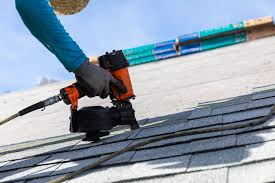A roof is more than a structure that caps a home—it is a long-term investment that influences comfort, durability, aesthetics, and energy use. Choosing the right roofing material requires a thoughtful balance between budget, weather conditions, architectural compatibility, and ongoing maintenance. With today’s diverse roofing options, the decision can feel overwhelming. That’s why guidance grounded in design awareness and material performance is essential. We will explore the various types of roofing materials available, their advantages and challenges, and how homeowners can align their choices with practical needs and long-term goals.
Understanding Your Environment and Roof Structure
Before examining materials, it’s critical to understand how your local environment and existing roof structure play a role in determining suitable options. Climate, for instance, can drastically influence the performance of roofing materials. In areas that receive heavy snowfall or rainfall, a steeper pitch is essential to promote water run-off, and materials like metal or slate are often preferred due to their resistance to moisture infiltration.
In contrast, regions with intense sunlight may benefit from reflective roofing materials such as clay or light-colored asphalt shingles, which can reduce indoor heat absorption and lower cooling costs. Wind resistance is another factor to consider. Coastal regions or tornado-prone zones may require roofs built with interlocking systems or reinforced shingles to withstand high gusts without damage. Consulting a roofing contractor early in the planning process can help homeowners assess these environmental pressures accurately and choose materials that align with both climate and structural needs.
Structural considerations also influence roofing options. Some homes may not be engineered to bear the weight of heavier materials like slate or concrete tiles. Installing such roofs without reinforcing the underlying structure could lead to future sagging or costly repairs. The shape and complexity of the roof also affect installation feasibility. Roofs with multiple angles, dormers, or skylights may require more flexible and easy-to-cut materials like asphalt shingles or composite tiles to accommodate unique layouts. Understanding these physical and environmental elements helps homeowners avoid mismatches that lead to premature deterioration or performance issues.
Exploring Material Options for Performance and Longevity
Each roofing material comes with its set of strengths, trade-offs, and performance characteristics. Asphalt shingles remain one of the most popular options across North America due to their affordability, versatility, and ease of installation. They come in a wide range of colors and styles, allowing for aesthetic flexibility. While they typically last between 15 to 30 years depending on weather exposure and maintenance, they may be less durable than other choices under intense weather conditions.
Metal roofing, including steel, aluminum, and copper, has gained popularity for its durability and low maintenance. Metal panels can withstand harsh climates, resist fire, and reflect solar heat, making them energy-efficient for warmer areas. They often last 40 to 70 years, with minimal upkeep, though they tend to be noisier during heavy rain unless properly insulated. The initial installation cost is generally higher, but the long-term benefits in durability and energy savings can offset the investment.
Slate or clay tiles appeal to homeowners seeking natural aesthetics and unparalleled longevity. These materials can last over a century with proper care and add a distinctive architectural look to traditional or historic homes. However, they are among the heaviest and most expensive materials, requiring skilled installation and reinforced roof structures.
Wood shakes and shingles offer a rustic and organic appearance but require more maintenance to prevent rot, mold, or insect infestation. These are typically used in drier climates where moisture is less of a concern. Composite roofing, made from a blend of plastic and rubber or recycled materials, is another versatile option that mimics the look of slate or wood but with improved resilience and lighter weight. These are also a sustainable option for environmentally conscious homeowners.
READ MORE : From Flooded to Fresh: EMRG’s Proven Process for Total Water Damage Recovery
Balancing Aesthetics with Long-Term Investment
The visual impact of a roof significantly influences a home’s curb appeal, but aesthetics should never outweigh practicality. The chosen material should complement the home’s architecture, surrounding landscape, and neighborhood style without compromising function. For example, a Spanish-style home may be well-suited for clay tiles, while a Craftsman-style bungalow may look more cohesive with architectural shingles or wood shakes.
Color plays an important role, too. Lighter-colored roofs reflect sunlight and help maintain cooler indoor temperatures in warm climates, while darker roofs are more suitable for colder regions where heat retention is beneficial. Beyond color, texture, and pattern also contribute to how the roof blends or stands out in its environment. Multi-tonal asphalt shingles can add dimension, while standing seam metal roofs lend a sleek and contemporary look.
While visual appeal matters, homeowners should think long-term. A roofing material that looks impressive but requires constant upkeep or has a short lifespan may not be the wisest choice in terms of time and cost. It’s vital to align material choice with the home’s intended occupancy period. If you plan to live in the house for decades, a higher initial investment in a longer-lasting material may offer better value than replacing a lower-cost option every 15 years.
Choosing the right roofing material requires more than picking the most attractive or affordable option. It involves evaluating how each material performs under your region’s climate, whether your roof structure can support its weight, and how its lifespan, maintenance, and aesthetics align with your long-term goals. From timeless slate and durable metal to versatile asphalt and eco-conscious composites, homeowners have a wide array of materials. Arrow Exterior Design encourages property owners to approach roofing decisions with foresight and a balance of practicality and design. With careful planning and guidance, you can select a roofing material that protects your home and enhances its value and style for years.
